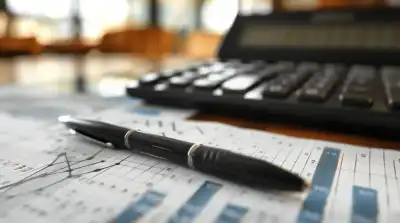29 October 2025
You’ve probably heard the phrase “saving for a rainy day” countless times. But have you ever stopped to really think about what it means? Sure, it sounds like something your grandparents might say, but this age-old advice is more relevant than ever. In today’s unpredictable world, it’s essential to have a financial cushion to fall back on. And let’s face it, life is full of unexpected twists and turns—so when those rainy days come, and they will, it helps to be prepared.In this article, we're going to dive deep into why saving for a rainy day is crucial, how much you should aim to set aside, and some actionable tips to help you get started. So, grab a cup of coffee, sit back, and let’s chat about the importance of building a financial safety net.
---

What Does "Saving for a Rainy Day" Even Mean?
Before we jump into the nuts and bolts, let’s clarify what “saving for a rainy day” actually means. Essentially, it’s just a fancy way of saying putting money aside for unexpected expenses. Life is unpredictable—whether it’s a sudden job loss, an emergency car repair, or a surprise medical bill, you never know when you’re going to need extra cash.
Imagine this: you're cruising along, everything's going great, and then—BAM! Your car breaks down, or your washing machine decides to stop working. Without a financial buffer, these unexpected expenses can throw your whole budget into chaos. That’s where rainy day savings come in. It’s like having an umbrella handy when the storm hits, so you don’t get completely drenched.
---
Why It’s Essential to Save for a Rainy Day
1. Unexpected Expenses Are Inevitable
Let’s be real—life doesn’t always go according to plan. In fact, it rarely does. No matter how carefully you budget, there will always be something that pops up out of nowhere. Think about it: Have you ever gone an entire year without facing at least one unexpected financial hurdle? Whether it’s a medical emergency, home repairs, or even something as simple as replacing a laptop battery, these things cost money.
Without some savings to fall back on, these unplanned expenses can lead to stress, anxiety, and even debt. And trust me, no one wants to be caught financially off-guard.
2. Avoiding Debt
Speaking of debt, let’s talk about why having a rainy day fund can help you avoid it. When you don’t have savings and an emergency strikes, what’s the first thing most people do? They turn to credit cards or loans. While these can provide temporary relief, they often come with high-interest rates that can trap you in a cycle of debt.
Imagine paying for that unexpected car repair over the next several months with interest tacked on. Yikes! By having a financial cushion ready, you can avoid relying on credit and keep your bank account (and blood pressure) in check.
3. Peace of Mind
There’s nothing quite like the peace of mind that comes with knowing you’re financially secure. Having a rainy day fund can reduce anxiety and make life’s little (or big) surprises a lot less stressful. When you know you’ve got some money saved for emergencies, it’s like having a safety net—sure, you might still fall, but at least you won’t hit the ground as hard.
Plus, you’ll sleep better at night. And who doesn’t love a good night’s sleep?
---
How Much Should You Save for a Rainy Day?
Okay, so we’ve established that saving for a rainy day is important. But how much should you actually save? The answer is—it depends.
1. Start Small
If you’re just starting out on your savings journey, the thought of setting aside a huge chunk of cash can feel overwhelming. But here’s the good news: you don’t need to save thousands of dollars overnight. Start small. Even setting aside just $500 can make a big difference in covering minor emergencies, like a car repair or a surprise bill.
2. Build Up to Three to Six Months of Expenses
Once you’ve got a starter fund in place, it’s time to aim for something bigger. Most financial experts recommend having three to six months’ worth of living expenses saved. This amount can act as a buffer in case of a more significant financial setback, like losing your job or facing a serious illness.
Think of it this way: if your monthly expenses total $2,000, you’d aim to have somewhere between $6,000 and $12,000 tucked away. It might sound like a lot, but remember—you don’t have to get there overnight. It’s all about steady progress.
---
How to Build a Rainy Day Fund: Practical Tips
Now that we’ve covered the “why” and “how much,” let’s talk about the “how” part. We all know that saving money can be easier said than done, especially with the endless temptation to spend. But with a little discipline and a few smart strategies, you can build up your rainy day fund faster than you think.
1. Set a Clear Goal
First things first: decide exactly how much you want to save. Having a specific goal in mind makes it easier to stay motivated. Whether it’s $500 for a starter fund or $10,000 for a fully loaded emergency stash, write down your target and keep it visible. This way, every time you contribute to your savings, you’ll feel like you’re getting closer to something tangible.
2. Automate Your Savings
One of the easiest ways to save is to make it automatic. Set up a direct deposit from your paycheck to a dedicated savings account. This way, you won’t even notice the money leaving your checking account—and you won’t be tempted to spend it on that shiny new gadget you’ve been eyeing.
Even if it’s just $50 a month, over time, those small amounts will add up. It’s all about consistency.
3. Cut Back on Non-Essentials
Look, I’m not saying you need to give up your daily latte or never treat yourself to a nice dinner out. But if you’re serious about building a rainy day fund, it might be time to take a closer look at your spending habits.
Could you cut back on takeout? Maybe cancel a subscription you’re not using? Even small changes can free up extra cash to put toward your savings. Remember, it’s not about depriving yourself—it’s about prioritizing your future financial security.
4. Use Windfalls Wisely
Got a bonus at work? A tax refund? Birthday money from your grandma? Instead of splurging on something you don’t really need, consider putting at least a portion of that money into your rainy day fund. Unexpected money is the perfect opportunity to boost your savings effortlessly.
5. Track Your Progress
There’s nothing more motivating than seeing your savings grow. Whether it’s through a budgeting app or old-school pen and paper, make sure you’re keeping track of your progress. Watching your rainy day fund inch closer to your goal can give you the extra push you need to keep going.
---
Where Should You Keep Your Rainy Day Fund?
So, where should you stash your rainy day savings? Under your mattress? In a shoebox? While those might be secure places from burglars, they’re definitely not the best options for your money.
1. High-Yield Savings Account
A high-yield savings account is a great place to keep your emergency fund because it’s easily accessible and earns interest. While you won’t make a fortune in interest, every little bit helps, and you’ll be able to withdraw the money quickly in case of an emergency.
2. Money Market Account
A money market account is another good option. These accounts typically offer slightly higher interest rates than traditional savings accounts, and they still provide easy access to your funds.
The key is to keep your rainy day fund in an account that’s safe and accessible—but not so accessible that you’re tempted to dip into it for non-emergencies.
---
In Conclusion: Start Saving Today
Saving for a rainy day might not be the most exciting thing in the world, but it’s essential. Life is unpredictable, and having a financial cushion can make all the difference when the unexpected happens. Whether you’re just starting out or looking to beef up your existing savings, the important thing is to start now.
Remember, it’s not about how much you save—it’s about building the habit of saving. Even small contributions can grow over time and provide you with peace of mind, financial security, and the confidence to face whatever life throws your way.
So, what are you waiting for? Grab that umbrella—financially speaking—and start saving for your rainy day fund today!


